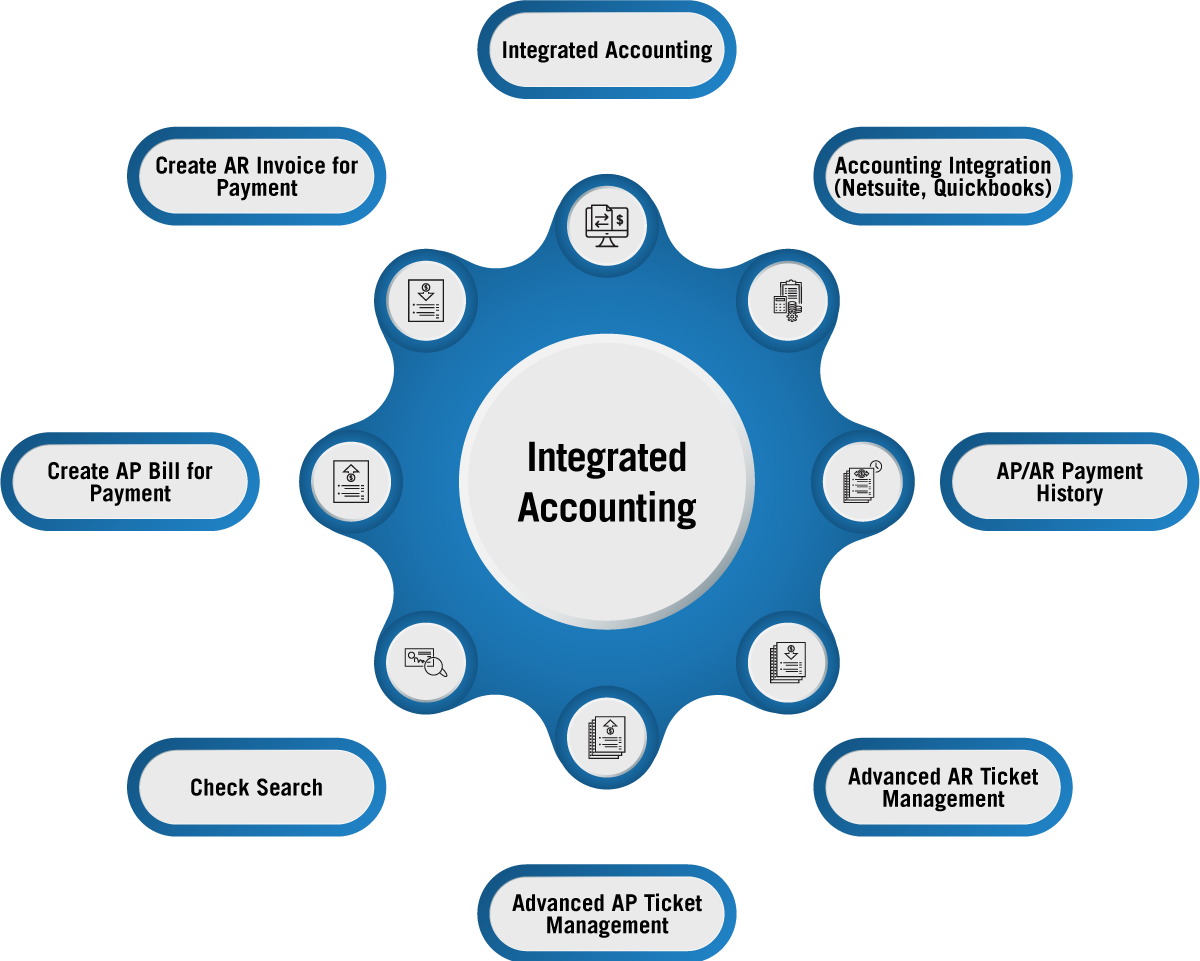The success of every firm depends on its ability to manage its money and maintain track of commercial transactions. Separate systems for accounting, invoicing, payroll, and inventory management were used by firms in the past, which resulted in fragmented data, ineffective procedures, and more potential for mistakes.
But now that integrated accounting software is available, firms can combine all of their financial operations into a single platform, which has several advantages and completely changes how financial activities are handled. This article examines the effectiveness of integrated accounting software and how it affects companies.
Features of Integrated Accounting Software
- General Ledger: A general ledger module is a component of integrated accounting software that keeps track of all financial activities, including purchases, payments, and cash flows. It enables accurate and current financial reporting and offers a complete picture of the company’s financial health.
- Accounts Payable and Receivable: Companies may effectively manage their accounts payable and receivable operations thanks to the software. It streamlines the generation of invoices, monitors payments and unpaid balances, maintains vendor data, and creates reports for improved cash flow management.
- Financial Reporting: A range of financial reports, including balance sheets, income statements, cash flow statements, and tax reports, are produced using integrated accounting software. These reports give information on the company’s financial performance, assisting business owners in making choices and adhering to legal obligations.
- Bank Reconciliation: By automatically matching transactions from bank statements with corresponding entries in the accounting system, the program accelerates bank reconciliation procedures. It assists in finding anomalies, account reconciliation, and ensuring the accuracy of financial data.
- Inventory Control: A few integrated accounting programs provide inventory control features. It keeps tabs on stock levels, controls stock transfers, and produces reports on inventory valuation. Businesses may use this functionality to optimize inventory levels, save carrying costs, and avoid stockouts or overstocking.
- Integration with Other Systems: Integrating integrated accounting software with other company systems including customer relationship management (CRM), inventory control, and e-commerce platforms. This interface makes data transmission easy, decreases the need for human data entry, and boosts overall operational effectiveness.
- Security and data protection: To safeguard sensitive financial data, integrated accounting software includes strong security safeguards. To defend against illegal access and avoid data loss, it guarantees data encryption, user access limits, and frequent backups.
Benefits of Integrated Accounting Software
- Saving time and money by automating manual accounting procedures, decreasing data input mistakes, and doing away with the need for various software programs. Time is saved, and the expense of human work related to financial administration is reduced.
- Better Accuracy and Financial Visibility: Businesses get immediate access to accurate financial data thanks to integrated accounting software. They can quickly prepare reports, keep tabs on financial performance, and base their choices on data-driven analysis of the most recent data.
- Integrated accounting software streamlines the workflow by doing away with the requirement for manual data transfers and reconciliations across several systems. Workflows are streamlined, duplicate data entry is decreased, and overall process effectiveness is increased.
- Scalability: Integrated accounting software may expand along with a company’s needs. Without sacrificing performance, it can serve many users, execute complicated financial operations, and accommodate rising transaction volumes.

Challenges of Integrated Accounting Software
- Cost: The upfront cost of integrated accounting software often includes license fees, installation costs, customization costs, and continuing support and maintenance costs.
- Limitations on Customization: Although integrated accounting software gives customization possibilities, the degree of modification that is possible could be constrained. The software might not be able to fully meet some specific business demands or needs related to a particular sector, necessitating manual workarounds or the need for other solutions.
- Integration Problems: Although integrated accounting software tries to expedite operations by merging several tasks, compatibility problems may occur when connecting with current systems or programs. Additional work and technical know-how may be needed for data migration, synchronization, and guaranteeing smooth data flow between different platforms.
- Dependence on Software Provider: For continuing support, upgrades, and maintenance, businesses depend on software suppliers. Businesses may have difficulties with maintenance, updates, or switching to other software solutions if the software vendor stops providing support or goes out of business.
- Data Security and Privacy Issues: Using integrated accounting software to store sensitive financial data necessitates strong security measures. To safeguard financial information from unauthorized access or breaches, businesses must ensure that the software supplier adheres to strict security procedures and conforms to appropriate data protection legislation.
Conclusion
Integrated accounting software has completely changed how companies handle their finances. Businesses may streamline their financial operations, minimize mistakes, increase decision-making, and boost overall efficiency by centralizing financial administration, automating jobs, offering real-time reporting and analysis, and simplifying procedures like payroll and inventory management.
